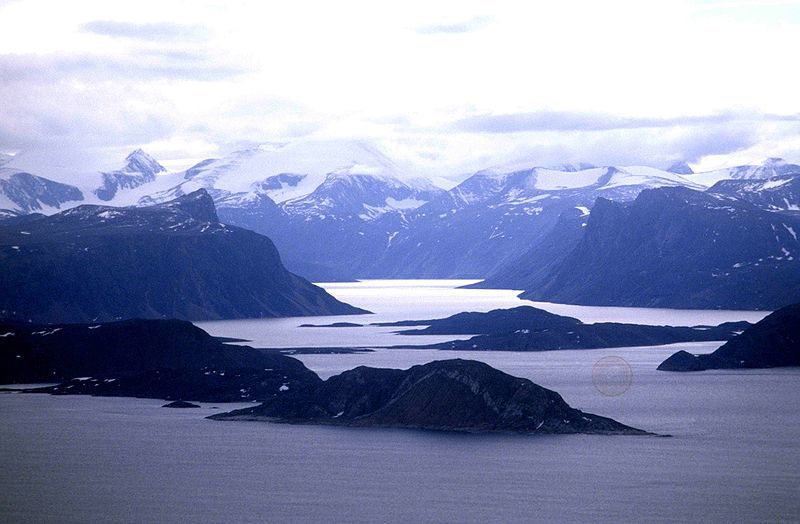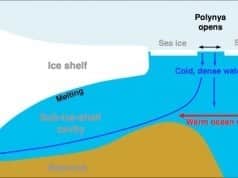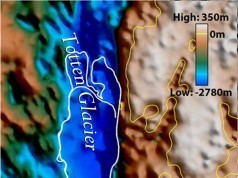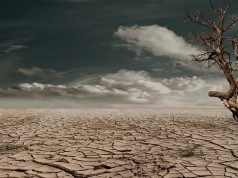Colorado University Boulder got more than one Nobel Prize in physics, and specializes in climate (because of NCAR). A new study shows unprecedented warmth in the Arctic. Here is part of CU Boulder press release, October 23, 2013:
“The heat is on, at least in the Arctic.
Average summer temperatures in the Eastern Canadian Arctic during the last 100 years are higher now than during any century in the past 44,000 years and perhaps as long ago as 120,000 years, says a new University of Colorado Boulder study.
The study is the first direct evidence the present warmth in the Eastern Canadian Arctic exceeds the peak warmth there in the Early Holocene, when the amount of the sun’s energy reaching the Northern Hemisphere in summer was roughly 9 percent greater than today, said CU-Boulder geological sciences Professor Gifford Miller, study leader.”
[The Holocene is the geological epoch that began after much of Earth’s last glacial period ended roughly 11,700 years ago and which continues today. the cause of the spectacular warming then is fully understood; it had to do with Northern Hemisphere’ summers receiving more sunlight, due to a combination of various characteristics of the Earth orbit, which was very different from today; then the Sun was closest to Earth in Northern summer, whereas now it’s in January or so, etc.]
“Miller and his colleagues used dead moss clumps emerging from receding ice caps on Baffin Island as tiny clocks. At four different ice caps, radiocarbon dates show the mosses had not been exposed to the elements since at least 44,000 to 51,000 years ago.
Since radiocarbon dating is only accurate to about 50,000 years and because Earth’s geological record shows it was in a glaciation stage prior to that time, the indications are that Canadian Arctic temperatures today have not been matched or exceeded for roughly 120,000 years, Miller said. [It is know that there was a short very warm episode then, due to orbital positions again.]
“The key piece here is just how unprecedented the warming of Arctic Canada is.the warming we are seeing is outside any kind of known natural variability, and it has to be due to increased greenhouse gases in the atmosphere.” said Miller.
Miller and his colleagues compiled the age distribution of 145 radiocarbon-dated plants in the highlands of Baffin Island that were exposed by ice recession. All samples were collected within one meter of the ice caps, which recede by 2 to 3 meters a year. “The oldest radiocarbon dates were a total shock to me,” said Miller.
[For how Carbon 14 dating works, see note.]
To find summer heat higher than in at least 44,000 years is, philosophically, highly significant. It urges to try to find a scientific pattern of systematic data points supporting that picture globally.
The poles are expected to warm up enormously, with total disappearance of the ice. Indications are that Antarctica is not secularly stable above 440 ppm CO2. We are already above that in CO2 equivalent (that is, adding 400 ppm of CO2 to other man made greenhouse gases, as methane and those used in refrigeration).
In the Jurassic, and generally the whole dinosaur era (200 million to 65 million years ago), probably because of a lot of shallow seas (?), the planet was warm. There were crocodiles in Greenland and dinosaurs in Alaska and Antarctica (one does not know how they went through the 6 month night). At the time of the disappearance of various species 65 million years ago, the planet cooled down a lot, and species able to maintain a warm metabolism continuously (avian dinosaurs and mammals), or a cold metabolism for a long time (crocodilians, turtles, snakes, etc.) were left to rule.
We are injecting CO2 at such high rate that one can expect the added heat to warm up enormously the two cold places: the poles and the deep ocean.
Much noise is made about Antarctica’s ice cover augmenting. This is not completely true, and where it’s true, it was an expected consequence of warming.
First what’s not true: West Antarctica and the Antarctic peninsula are melting, and fast. Grass has actually appeared in the later, and flowering plants brought on scientists’ shoes have become a problem. Brace for agriculture in Antarctica.
Second what’s only superficially true: the energy of the winds around Antarctica, from a generalization of the Equipartition of Energy theorem, have augmented in speed. So winter ice spread far and wide more than it did before. In truth, there is less of it in volume.
Third what is true: warm air carries more moisture. Extremely cold air carries no moisture at all. That’s why elevated (up to 4,000 meters) East Antarctica is the driest place on Earth (hence one looks for meteorites there). East Antarctica is warming up, so the air carries more moisture, and since it’s still very cold, it snows more.
The potential for catastrophe is greater there; much of east Antarctica, under the enormous weight of the ice, is down to 200 meters below sea level. The margins of these deep basins are much less so, but they are often located at high latitudes (above the polar circle in Wilkes Land!).
So sea water could infiltrate and melt the continental ice from below (that’s how the Hudson Bay ice shield melted in a few decades; this phenomenon is already launched in West Antarctica, where the sea margin is advancing at one kilometer per year, at least).
The increasing injection of about 40 BILLION TONS of CO2 each year in the atmosphere is a large scale physics experiment. A natural change of 100 ppm takes 3,000 to 20,000 years. We have done more than that in a century. Atmospheric CO2 is at its highest level in 15 to 20 million years (Tripati 2009). During the Middle Miocene, temperatures were around 3 to 6 degrees Celsius warmer (12 Fahrenheit). The ocean was 25 to 40 meters higher than at present, with a density of CO2 similar to present levels.
But don’t worry: Obama’s golf is doing fine, his skin is brown, rejoice: you ‘ve got the change you can believe. All the more as the administration of the USA is doing its best to augment the production of fracking and freaking fossil fuels, while saving the coal industry by exporting all the coal possible to other countries. Something facilitated by new ports. Craftily, the administration has oriented the conversation towards the XL pipeline.. while the trains carrying all the fuel roll away in the night.
The fossil fuel and gas production of the USA, the highest in the world, is twice that of Saudi Arabia at its peak. The CO2 craze, by shrinking vital space, the Lebensraum, guarantees a war of extermination. Is that the subconscious desire of the elite of the USA? What else? Just plain stupidity?
Patrice Ayme
Notes: Located west of Greenland, the 196,000-square-mile Baffin Island is the fifth largest island in the world. Most of it lies above the Arctic Circle. The ice caps on the highlands of Baffin Island rest on flat terrain. They are remnants of the Laurentide iceshield, at least 28,000 years old. “Where the ice is cold and thin, it doesn’t flow, so the ancient landscape on which they formed is preserved pretty much intact,” said Miller.
Summer temperatures cooled in the Canadian Arctic by about 5 degrees Fahrenheit from roughly 5,000 years ago to about 100 years ago – a period that included the Little Ice Age from 1275 to about 1900.
“Although the Arctic has been warming since about 1900, the most significant warming in the Baffin Island region didn’t really start until the 1970s,” said Miller. “And it is really in the past 20 years that the warming signal from that region has been just stunning. All of Baffin Island is melting, and we expect all of the ice caps to eventually disappear, even if there is no additional warming.”
A 2012 study by Miller and colleagues using radiocarbon-dated mosses that emerged from under the Baffin Island ice caps and sediment cores from Iceland suggested that the trigger for the Little Ice Age was likely a combination of exploding tropical volcanoes – ejecting aerosols that reflected sunlight back into space – and a decrease in solar radiation (blatant from the reduction of sun spots, the multi-century Maunder Minimum).
How does carbon dating work?
When the plants are alive, they take in carbon from the atmosphere (plants absorb carbon dioxide and emit oxygen). The atmosphere contains stable and unstable carbon. The unstable carbon decays away. However, collisions of carbon with cosmic rays (high-energy particles from the cosmos) fabricates unstable Carbon-14. Carbon 14′s nucleus has 6 protons and 8 neutrons, whereas Carbon 12, the stable form, has 6 of each.
Half of a set of carbon-14 nuclei decay in 5400 years. Half of the remainder will be gone by the time the next 5400 years have passed.
Once plants are covered by ice, they die, and their carbon 14 decays. One can tell , by looking at the ratio C14/C12 how much time has elapsed. However, so much C14 has decayed after about 50,000 years, one can’t tell what’s left.






